Yorktown
The Final Battle of the American Revolution
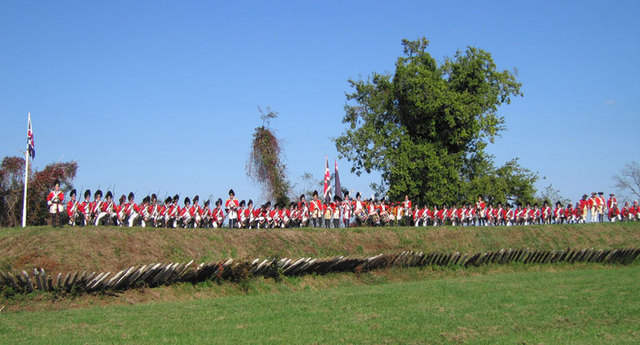
| Route 66 | Cities | Beaches |
|
Yorktown The Final Battle of the American Revolution |
 |
Ash Lawn |
Williamsburg | Yorktown |
 |
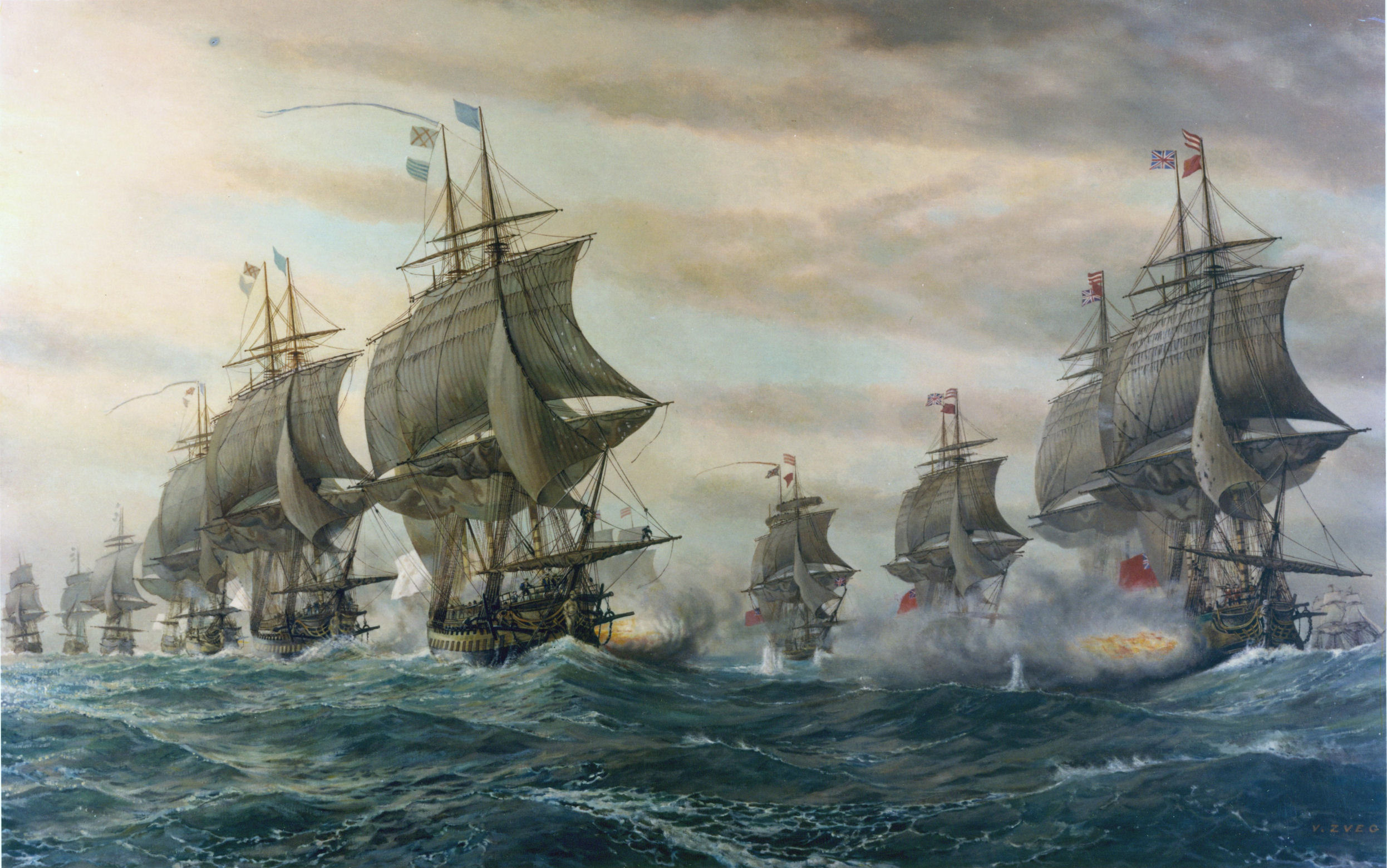 |
Yorktown was where America won its Revolution and became an independent nation. The British forces arrived confident they had maneuvered the Colonials into the perfect trap and instead found out it was they who had been trapped. The British idea was that General Charles Cornwallis and his Army Of The North would retreat down through Virginia, luring Washington and the Northern Colonial Army to pursue them out onto the narrow and exposed Yorktown Neck. Once there, Lieutenant Colonel Banistrae Tarlton and his Green Dragoons and General Henry Clinton and the British Army of the South, which Cornwallis had been assured were crushing the Southern Colonial Army in the Carolinas, would close in behind Washington, trapping him in a classic pincer movement. The British Navy was coming down from New York to resupply Cornwallis with ammunition and food, bombard the Americans from the sea, then load the British troops after their smashing victory and carry them victoriously back to England. |
| Cornwallis reached Yorktown first and had time to dig extensive breastworks, build high walls, and fortify them with formidable rows of sharpened logs. (In the 240 years since, the points have been smoothed and rounded by the weather, but when first installed they were dangerously sharp.) As Colonials tried to climb over the sharp points, the British would be firing down on them from above. It would be an almost impenetrable fortress. Behind the walls, Cornwallis had heavy cannon and men skilled in using them. Once this work was done, the British relaxed and waited for Washington's arrival. Many of the men watched the sea longingly, hoping their Navy would arrive soon with supplies of fresh fruit, salted fish, scones and other British favorites which they had been unable to get in the Colonies. | 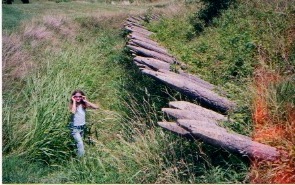 |
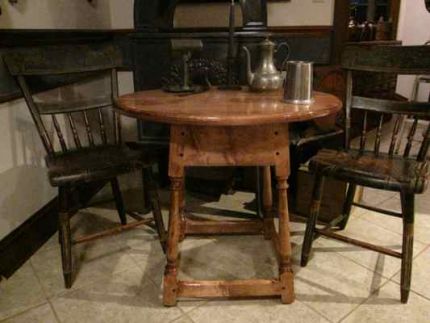 |
Washington paused his men and camped on the fields outside Williamsburg. He had gone to college at The College of William & Mary and knew the area very well. Washington, French Special Forces Advisor Le Marquis de Lafayette, French Commander Comte Rochambeau, and Commander of the Southern Colonial Army Nathan Greene ate and planned strategy at a rear corner table in Christiana Campbell's Tavern in Williamsburg. (The room and very same table are still there; history lovers delight in eating at that table.) With a definite plan, wagons filled with supplies for an extended campaign, and the men rested and healthy, Washington then marched his Army in one day to the plains above Yorktown. What Cornwallis did not know was that the British Army of the South and the feared Green Dragoons were not marching victoriously in from North Carolina to trap the Colonials. Frances Marion ("The Swamp Fox") and his guerilla forces had harassed and distracted both British units for over a year while Greene recruited, supplied and trained his Southern Colonial Army. Finally, at Cowpens, the Dragoons were lured into a trap and destroyed. Greene then followed Washington's example, retreated carefully across North Carolina, engaging and withdrawing over and over again in small battles to gradually weaken Clinton's army until the remnants merely straggled into Yorktown. |
| French Naval Commander de Grasse sealed off the entrance to Chesapeake Bay. When the British Navy arrived from New York the two engaged in a three day battle portrayed by the painting above. On September 3 the French celebrated the only victory they ever won over the British Navy. Many British ships were sunk and others were abandoned to drift ashore along Chesapeake Bay. The remaining few limped back to England. The British Army was now trapped against the sea at Yorktown. Washington, Greene and Rochambeau dug in for a prolonged siege. They had their own cannon, lighter and shorter range than the British but still deadly and manned by better marksmen. They positioned these cannon very strategically, allowing them to fire at angles into the British breastworks. The French Navy bombarded British positions from the sea. | 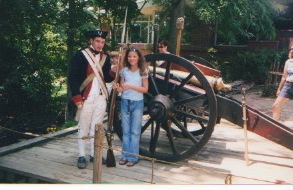 |
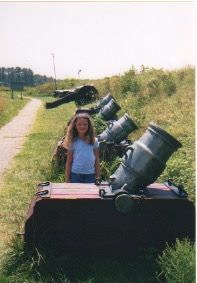 |
The Marquis de Lafayette was the brilliant and courageous master of guerilla warfare. He had an array of these light cannon, which could be easily moved. For a month, every single night, he and his men would use the cover of darkness to move the cannon up close to the British redoubts, fire rounds into their midst, then move the cannon back out of range of the more powerful British cannon. Lafayette and his guerillas would sleep all day while Washington, Greene and Rochambeau carried out more traditional military strategties and tactics. Lafayette and his men would awaken, eat dinner, and swing back into action. The result was that the British soldiers could never sleep. They found themselves under siege literally 24 hours a day seven days a week. Lafayette saved his most daring tactic until the last week of the siege. He and his men prepared hundreds of bottle bombs, stuffing gunpowder into ceramic bottles, capping them with rags soaked in whale oil, with a rag strip extending. He and his very best men crept right under the pointed sticks protecting the British battlements, lit the rags, and tossed them up over and into the British ranks. The flame would quickly burn down into the gunpowder, igniting a vicious explosion which blew fragments of ceramic everywhere. Years later, back in England, Cornwallis admitted neither he nor anyone else in the British Army had ever seen such tactics and after several weeks his soldiers were wounded and exhausted and lost much of their effectiveness. |
| However, the British Army was the most powerful in the history of the world. They were well equipped, well trained, well entrenched, and Cornwallis and his lieutenants were very good tacticians. Cornwallis firmly believed help would be on the way, either from Canada or England, if he could hold out long enough. The Siege of Yorktown lasted from September 1 through October 17th. It was the greatest and longest lasting military confrontation in the history of North America. There were enough heroics and dramas on both sides to fill several movies and a whole library of books. | 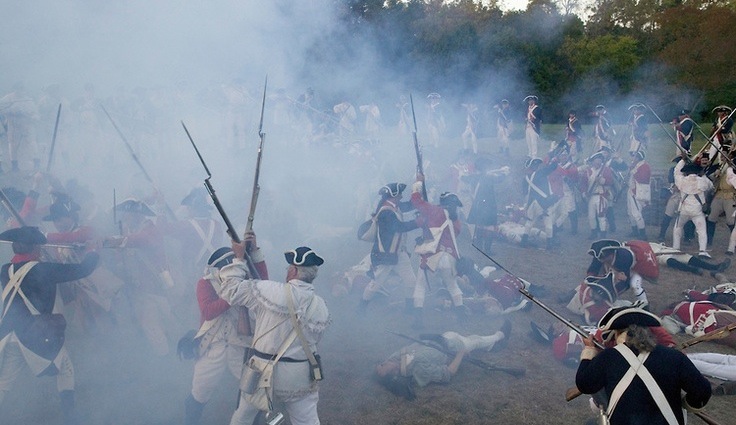 |
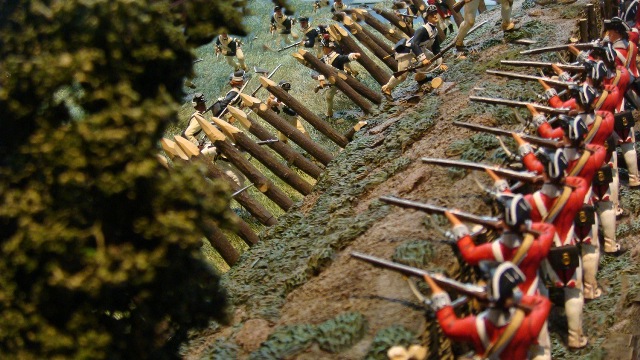 |
You need at least half a day at Yorktown, and if you're a history lover, you need a full day. You need time to drive and walk around, study the lay of the land, inspect the cannon installations, climb over the battlements, visit the exhibits, attend the lectures, take at least one tour, watch the film, study the models, enjoy the reenactments, and study all the maps, historical markers, displays and other materials. Yorktown is a sprawling area of forests, hills, ravines, coastlines, open fields and the actual town. You'll need to do some hiking. |
| This pasture is known as Surrender Field. It was where, on the morning of October 19th, Cornwallis lieutenants marched his troops out to meet Washington and his troops. One by one, the British troops marched past the Colonials and laid their rifles, with bayonets mounted, on the ground. Cornwallis himself did not appear; he claimed to be ill and remained in his tent. Instead, Brigadier General Charles O'Hara presented Cornwallis' sword to Washington. In the background, the British band played "A World Turned Upside Down." The British were in disbelief that after centuries of defeating powerful armies and navies from the Roman Empire, Spain, France, Holland, what would become Germany, and the Pirate Navy of the Barbary Coast, they had been defeated by "a rabble in arms consisting of farmers, blacksmiths, store clerks and fishermen, not even soldiers but part timers, who went hunting for rabbit and deer with the same guns they carried into battle." Washington took 8000 prisoners but made sure they were treated humanely until he could trade them back to the British for captured Americans at the Treaty of Paris in 1783. | 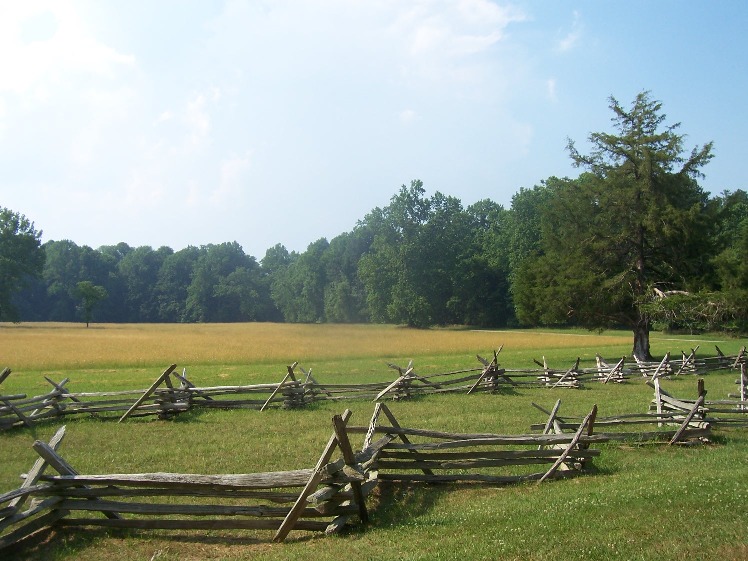 |
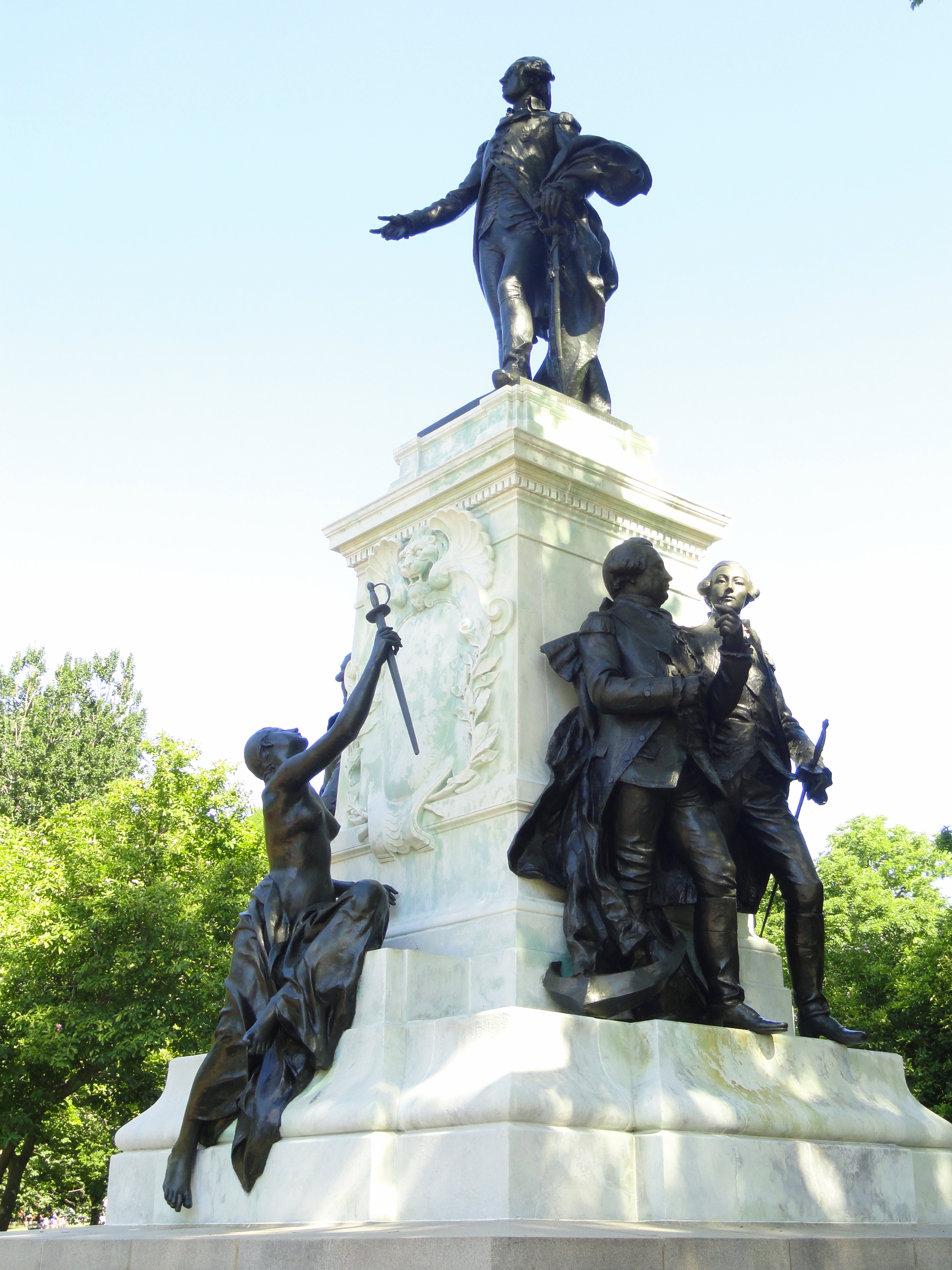 |
Washington was deeply grateful to the French and Germans for their help. For the rest of his life he would remind everyone that America could never have won its independence without them. He kept asking Lafayette how he could ever repay him and Rochambeau for their contributions. Lafayette famously told Washington, "History is long and full of surprises. The day will come when France is in serious trouble and will need America to come to its aid. When that day comes, you will repay the debt." 150 years later France was suffering under the thumb of Adolf Hitler and the Naziis. As the Allied Forces approached the beaches of Normandy, Commander Dwight D. Eisenhower made his famous announcement, "Lafayette, we are here." Much later, as the victorious Americans entered Paris, Officer Charles Stanton repeated the announcement to the cheering French people. That afternoon, General John Pershing laid a single rose on the grave of the Marquis de Lafayette, who was named on honorary U.S. citizen in 1803 and at his own request was buried in the Paris cemetery under a load of American soil dug from Surrender Field and transported across the ocean. |
| Most people who visit Yorktown do so as part of a several day visit to Williamsburg, and stay at a Williamsburg hotel. However, you can stay in the historic village of Yorktown, within walking distance of the British fortifications, at the Duke of York Hotel.This is not a modern five star facility. It's a 1970s style Mom & Pop place. But the rooms are clean, the staff is efficient and welcoming, and there are some surprises, like a coffeemaker, fridge and microwave. You're right on a beautiful small beach, as shown at right. Within a few blocks are a dozen historic sites, such as the house where Washington and Cornwallis negotiated the Surrender. Also within a few blocks are several outstanding restaurants, specializing in seafood and colonial era dishes. There's a small outdoor pool and an on site restaurant which serves excellennt breakfasts. If you request a third floor waterfront balcony room, you can enjoy beautiful sunsets over the York River, then leave the drapes open and wake up next morning to the sun rising over Chesapeake Bay. A block down the street is the Yorktown Wharf, where you can board a fishing charter or sightseeing cruise. And, in a town that has been here since 1690, there are antique shops to browse. Because of the beach, fishing and battlefield, the place stays full in the Summer, so you need to make reservations well ahead of time. Rooms about $120 a night. | 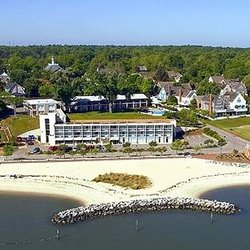 |
|
|||
|